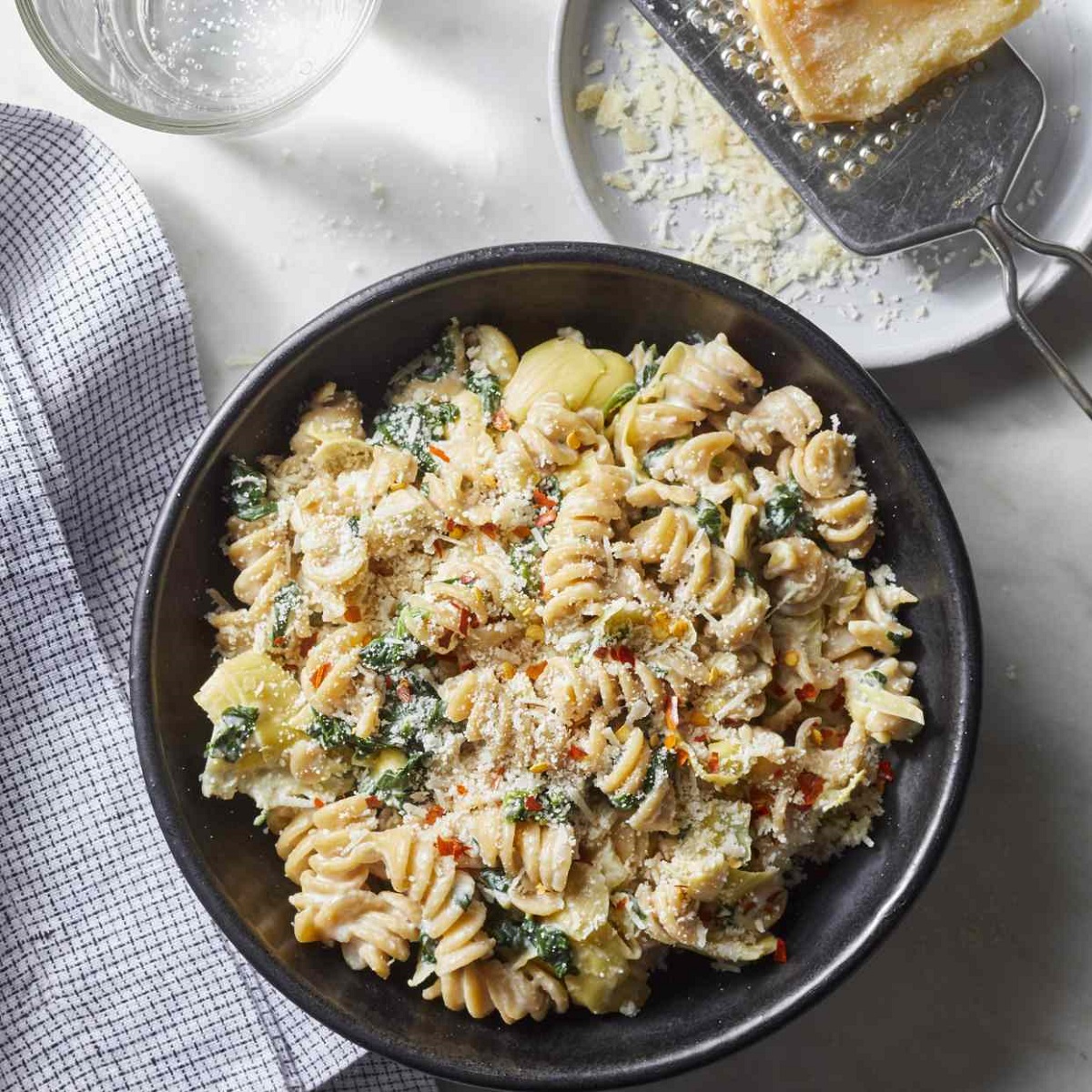Noodles are a staple in many diets worldwide, and if you’re anything like me, you’ve probably got a soft spot for a hearty pasta dish. But with so many options available—whole-wheat, bean-based, veggie noodles, and more—how do you know which ones are best for your health? Let’s break down the top six healthiest noodles you should consider adding to your pantry, making your pasta nights both delicious and nutritious.
1. Whole-Wheat Pasta: A Fiber-Packed Classic
Whole-wheat pasta is a simple and accessible way to boost the nutrition of your favorite pasta dishes. Made from whole grains, it offers a solid 43 grams of carbohydrates, 3 grams of fiber, and 8 grams of protein per cooked cup. Considering most of us don’t get enough fiber, whole-wheat pasta is a tasty solution that benefits both your heart and digestive health.
I know some people might think whole-wheat pasta has a bit of an earthy taste, but trust me, with the right sauce—like a vibrant pesto or a creamy spinach and artichoke dip—it’s a winner. It’s all about finding the right pairing to satisfy even the pickiest eaters.
2. Chickpea Pasta: Protein-Packed and Gluten-Free
If you’re looking for a pasta that’s rich in both protein and fiber, chickpea pasta is your go-to. It’s slightly harder to find, but worth the effort—check the gluten-free or natural foods section of your grocery store. Each 2-ounce serving packs a hefty 14 grams of protein and 8 grams of fiber, making it a filling option that keeps you satisfied.
Chickpea pasta has a neutral flavor, which makes it perfect for family meals, especially if you’ve got kids who can be picky about their food. Whether you’re whipping up a classic mac and cheese or a quick weeknight dinner with jarred sauce, chickpea pasta is a versatile and nutritious choice.
3. Veggie Noodles: A Low-Carb, Nutrient-Rich Alternative
For those who want to cut down on carbs without sacrificing their love for noodles, veggie noodles are an excellent alternative. Zucchini, spaghetti squash, and butternut squash can all be spiralized or roasted to create a nutritious base for your meals. Not only do these vegetable-based noodles save calories, but they also help you sneak more veggies into your diet—a win-win in my book.
I’ve tried some creative combinations over the years, and one of my favorites is mixing zucchini noodles with traditional spaghetti for a dish that’s both filling and full of flavor. It’s a simple way to lighten up a classic meal without feeling like you’re missing out.
4. Red Lentil Pasta: A Colorful, Protein-Rich Option
Red lentil pasta is another great choice for those looking to boost their plant-based protein intake. With 15 grams of protein and 3 grams of fiber per serving, plus a good dose of iron, this pasta is as nutritious as it is colorful. Its rich orange hue might not fool anyone into thinking it’s regular spaghetti, but it adds a vibrant touch to your plate and pairs well with a variety of sauces.
If you’ve got someone in your household who’s not a fan of lentils, this is a sneaky way to get those nutrients in. Trust me, even lentil skeptics might change their tune once they try this pasta.
5. Soba Noodles: A Whole-Grain Twist on Japanese Cuisine
Soba noodles, made from buckwheat, are a fantastic option for those seeking a gluten-free pasta that doesn’t skimp on flavor. Buckwheat is a whole grain, offering more fiber than many other types of noodles. Soba noodles are a staple in Japanese cuisine, often served in soups or cold noodle bowls.
I’ve enjoyed these noodles in various dishes, but one of my top picks is a cold soba noodle salad with summer vegetables and a sesame dressing. It’s a refreshing meal that’s perfect for warm weather, and the whole-grain goodness of buckwheat adds a satisfying chew.
6. White Pasta: The Classic Choice with Surprising Benefits
Let’s not forget the classic white pasta—often seen as less healthy but still holding its own in the nutrition game. Made from semolina flour and enriched with vitamins and minerals like iron, folate, and B vitamins, white pasta provides 9 grams of protein and 3 grams of fiber per cooked cup.
While it might not be a whole-grain food, white pasta can certainly fit into a balanced diet. The key is moderation and balance—mix it up by alternating with whole-wheat or bean-based pastas and always pair your pasta with plenty of veggies and some lean protein. Sometimes, there’s nothing like a comforting bowl of classic spaghetti, and with the right accompaniments, you can enjoy it guilt-free.

